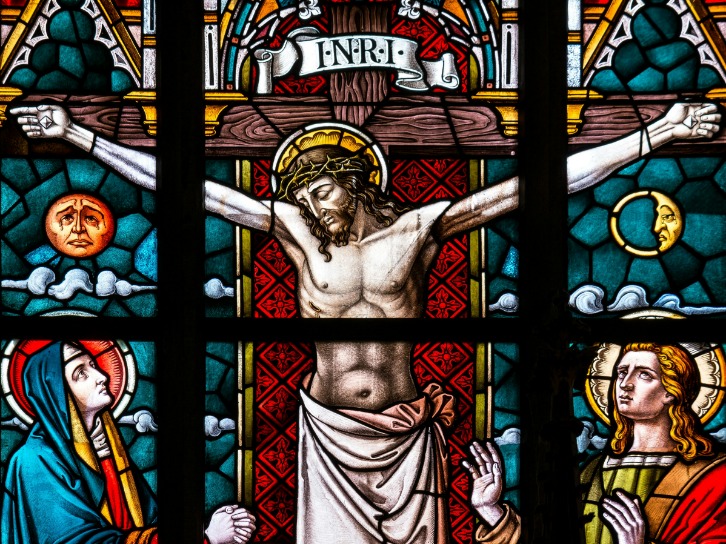Historical Significance of the Bible in Ethiopia
The Bible holds a profound historical significance in Ethiopia, serving as a cornerstone of its religious, cultural, and literary heritage. As one of the earliest regions to embrace Christianity, Ethiopia’s ancient connection to the biblical tradition has shaped its unique identity. The Ethiopian Orthodox Church’s ancient manuscripts, such as the Ge’ez Bible, reflect a rich religious history that has influenced the nation’s development, art, and education over centuries. This deep-rooted spiritual tradition underscores Ethiopia’s pivotal role in the broader story of Christianity and biblical history.
Ancient Christian Traditions in Ethiopia
The Bible holds a profound historical significance in Ethiopia, serving as a cornerstone of its ancient Christian traditions and cultural identity. Ethiopia is one of the earliest countries to adopt Christianity as its official religion, dating back to the 4th century AD. This deep-rooted Christian heritage is exemplified by the presence of unique religious practices, ancient churches, and manuscripts that reflect Ethiopia’s spiritual history. The Ethiopian Orthodox Tewahedo Church, one of the oldest Christian denominations, considers the Bible central to its faith and liturgy, preserving ancient texts and traditions that date back centuries. The Ethiopian version of the Bible, known for its distinct language and content, underscores the country’s longstanding religious traditions and its vital role in shaping Ethiopia’s national identity. Overall, the Bible’s influence on Ethiopia encompasses religious, cultural, and historical aspects, making it an integral part of the country’s legacy and spiritual life.
The Role of the Ethiopian Orthodox Tewahedo Church
The Bible holds a profound historical significance in Ethiopia, serving as a foundational element of its religious, cultural, and historical identity. It is considered one of the earliest regions to adopt Christianity, shaping the nation’s development for centuries. The Ethiopian Orthodox Tewahedo Church, as one of the oldest Christian communities in the world, has played a vital role in preserving and promoting biblical teachings throughout Ethiopian history.
- The Ethiopian Orthodox Tewahedo Church is believed to have been established in the 4th century, making it one of the oldest Christian churches globally.
- The church has preserved unique biblical texts and translations, including the Ethiopic version of the Bible, which contains books not found in other versions.
- It has been a guardian of biblical traditions, rituals, and teachings, influencing Ethiopian culture, art, and society.
- The church’s leadership played a crucial role in Ethiopia’s resistance against various foreign invasions and cultural influences, reinforcing national identity grounded in Christianity.
- By fostering literacy and education through biblical texts, the Ethiopian Orthodox Tewahedo Church contributed to the development of indigenous written language and scholarship.
Historical Manuscripts and Coptic Texts
The Bible holds a profound historical significance in Ethiopia, serving as a cornerstone of religious, cultural, and scholarly identity for centuries. Ethiopia is one of the earliest regions to adopt Christianity as a state religion, with the Ethiopian Orthodox Tewahedo Church playing a vital role in preserving biblical traditions and teachings. The country’s deep religious roots are reflected in the rich collection of historical manuscripts, many of which date back to the medieval period and are invaluable for understanding early Christian history and Ethiopian heritage.
Among these manuscripts are numerous biblical texts, written in Ge’ez, an ancient liturgical language that has preserved many biblical elements since the early days of Christianity in Ethiopia. These texts include translations of the Bible, commentaries, and liturgical scripts that demonstrate the unique religious practices and theological interpretations of Ethiopian Christians. The preservation of Coptic texts and manuscripts further highlights Ethiopia’s historical connections with the Coptic Church in Egypt, emphasizing its role as a cultural and religious bridge in the region.
The Ethiopian biblical manuscripts and Coptic texts not only serve as religious documents but also as historical artifacts that shed light on the country’s literacy, art, and theological development over the centuries. Their preservation and study continue to be vital for understanding Ethiopia’s distinct Christian tradition and its influence on the broader Christian and Coptic worlds.
Ethiopian Biblical Texts and Manuscripts
Ethiopian biblical texts and manuscripts hold a unique and rich heritage that reflects the deeply rooted Christian traditions of Ethiopia. These ancient documents, often written in Ge’ez, the liturgical language, offer invaluable insights into the religious history and theological developments of the region. Preserved over centuries, they embody the spiritual devotion and cultural identity of the Ethiopian Orthodox Church, making them a vital part of both Ethiopian and world biblical history.
The Ethiopian Bible (Oromoota)
The Ethiopian Biblical texts and manuscripts hold a unique place in the history of Christianity, reflecting the rich religious heritage of Ethiopia. The Ethiopian Orthodox Tewahedo Church possesses one of the oldest and most extensive biblical collections in the world, including biblical texts written in Ge’ez, the ancient liturgical language of Ethiopia. These manuscripts often contain translations and versions of the Bible that date back to the 4th and 5th centuries, illustrating the early adoption of Christianity in the region.
The Ethiopian Bible, particularly the version known as the “Oromoota” in some contexts, is notable for its distinctive content and structure. It includes books that are considered apocryphal in other Christian traditions, emphasizing Ethiopia’s unique theological and biblical tradition. The Ethiopian Orthodox Tewahedo Church’s canon comprises 81 books, more than most other Christian denominations, reflecting their broader biblical canon.
These manuscripts are often handwritten on parchment and richly decorated, featuring illuminations and intricate designs that highlight their religious significance. They serve not only as religious texts but also as cultural and historical artifacts, preserving Ethiopia’s early Christian heritage. Preservation of these texts has been a priority, with many housed in monasteries, churches, and national collections, ensuring their transmission for future generations.
Overall, the Ethiopian Bible and its manuscripts exemplify Ethiopia’s long-standing Christian tradition, showcasing a unique blend of biblical canon, language, and artistic expression that underscores the country’s vital role in the history of Christianity in Africa and the world.
Unique Features of the Ethiopian Canon
The Ethiopian Biblical texts and manuscripts are a remarkable testament to the rich religious and cultural heritage of Ethiopia. They include some of the oldest and most complete versions of biblical writings, many of which date back to the early centuries of Christianity. These manuscripts are primarily written in Ge’ez, an ancient Semitic language that is now primarily used in liturgical contexts. The Ethiopian Orthodox Tewahedo Church’s canon is notably unique, incorporating books not found in the Western or Eastern Christian tradition, such as Enoch, Jubilees, and the Salvation of Abraham. Additionally, the Ethiopian Bible emphasizes themes of ritual purity and spiritual purity, which are reflected in its extensive hymnody and liturgical texts. The manuscripts often feature elaborate illuminations, unique iconography, and distinctive manuscript traditions that highlight Ethiopia’s long-standing Christian heritage. Such features underscore the significance of Ethiopian biblical texts as both religious scriptures and cultural artifacts, showcasing a distinctive biblical canon that highlights Ethiopia’s historic role as one of the earliest centers of Christianity.
Notable Manuscripts and Preservation Efforts
Ethiopian Biblical texts and manuscripts hold a unique place in the history of Christianity, reflecting a rich tradition that dates back centuries. These manuscripts encompass a diverse collection of religious writings, including biblical texts, liturgical materials, and commentaries that have been meticulously preserved by Ethiopian Christian communities. The high level of craftsmanship and dedication evident in these manuscripts highlight their cultural and spiritual significance, serving as vital links to Ethiopia’s early Christian history.
Notable manuscripts include the Garima Gospels, which are some of the earliest illustrated Christian manuscripts in the world, and the Kebra Nagast, an epic poem that includes the story of the Queen of Sheba and the Ark of the Covenant. Other important texts are the Ethiopian Orthodox Tewahedo Church’s Bible translations, which retain ancient liturgical language and unique textual traditions not found elsewhere.
Preservation efforts for Ethiopian biblical manuscripts are ongoing and vital due to environmental challenges, political instability, and the fragility of historical materials. Organizations such as the Ethiopian Ministry of Culture and various international institutions have undertaken projects to catalog, digitize, and conserve these invaluable manuscripts. These initiatives aim to safeguard Ethiopia’s religious heritage for future generations, ensuring that their historical and spiritual significance endures amid modern developments.
Languages and Translations of the Bible in Ethiopia
Ethiopia is renowned for its rich biblical heritage, with the Bible playing a central role in its religious and cultural history. The country has a long tradition of translating the Scriptures into numerous languages to ensure that people from diverse linguistic backgrounds can access and understand God’s word. Throughout history, Ethiopia has developed a unique collection of biblical texts and translations, reflecting its deep-rooted Christian faith and commitment to spreading spiritual teachings across different communities.
Ge’ez Language and Its Biblical Texts
The Bible has played a central role in Ethiopian religious and cultural history, with a rich tradition of translation and transmission. The ancient Ge’ez language, an extinct South Semitic language, served as the liturgical language of the Ethiopian Orthodox Tewahedo Church. Ge’ez is considered the liturgical language of Ethiopia and is sometimes referred to as the classical language of the country. Its biblical texts, including the Old and New Testaments, have been preserved in Ge’ez manuscripts for centuries. The translation of the Bible into Ge’ez began early in the Christian history of Ethiopia, making it one of the oldest biblical translations in the world. This translation helped to establish Christianity as a major religion in Ethiopia and influenced subsequent biblical translations in other languages. Today, Ge’ez remains a ceremonial language used in religious services, and its biblical texts continue to hold significant spiritual and historical importance for the Ethiopian Orthodox community. The translation efforts and preservation of these texts underscore Ethiopia’s unique and enduring Christian heritage.
Translation Efforts and Versions

The Bible has a rich history of translation and distribution in Ethiopia, reflecting the country’s deep-rooted Christian traditions. Ethiopia is renowned for being one of the earliest regions to adopt Christianity, with its own ancient Christian canon and translation efforts. Over centuries, various translations have been made to make the Scriptures accessible to different linguistic communities within the country and beyond. These efforts have helped solidify Christianity’s role in Ethiopian culture and spiritual life.
Several versions of the Bible in different Ethiopian languages exist today, showcasing the linguistic diversity of the nation. The translations include both ancient and contemporary versions, often tailored to suit the cultural context and linguistic nuances of their audiences. The primary languages for biblical translation in Ethiopia are Ge’ez, Amharic, Oromo, Tigrinya, and others, each with its unique history and significance.
- Ancient Translations: The Ge’ez Bible, known as the Ethiopia’s classical liturgical language, is one of the oldest translations, dating back to the 5th century. It remains a vital liturgical text for the Ethiopian Orthodox Tewahedo Church.
- Amharic Bible: As the official language of Ethiopia, numerous translations of the Bible into Amharic have been produced, including modern versions to facilitate evangelical and academic use.
- Oromo and Tigrinya Translations: These languages have seen recent translation projects aimed at increasing accessibility for their speakers, with efforts led by various religious organizations and translation committees.
- Contemporary Versions: Modern translations often aim to provide clearer understanding and are used in educational and evangelical contexts, including versions like the New Ethiopian Version and others tailored to modern readers.
Overall, the translation efforts in Ethiopia reflect a commitment to making the Holy Scriptures accessible to diverse linguistic communities, preserving cultural heritage, and supporting the spiritual growth of its people.
Modern Translations and their Impact
The languages and translations of the Bible in Ethiopia hold a significant place in the country’s religious and cultural history. Ethiopia boasts a rich tradition of biblical translation, with the Ge’ez language serving as one of the earliest liturgical languages used in the Ethiopian Orthodox Tewahedo Church. Over time, the Bible has been translated into numerous modern languages such as Amharic, Oromo, Tigrinya, and others, making the scriptures accessible to a broader population. These translations have played a vital role in spreading Christianity and supporting religious education across diverse communities. Modern translations of the Bible have had a profound impact on language development, literacy, and intercultural understanding in Ethiopia. They have also contributed to the preservation and revitalization of indigenous languages, ensuring that the spiritual and cultural heritage remains vibrant and relevant in contemporary society.
Theology and Interpretation
Theology and interpretation play a crucial role in understanding the profound messages within the Bible, especially when exploring its connection to Ethiopia. These disciplines help unravel the historical, cultural, and spiritual contexts that shape biblical texts, allowing readers to gain deeper insights into Ethiopia’s significant role in biblical history. By examining scriptural passages through a theological lens, one can appreciate the rich religious heritage and the enduring legacy of Ethiopia in Christian tradition.
Distinctive Doctrines and Biblical Interpretations
Theology and interpretation of the Bible play a crucial role in understanding Ethiopia’s rich religious heritage, especially given the country’s deep roots in Christianity. Distinctive doctrines in Ethiopian Christianity often emphasize the divine nature of Christ, the importance of tradition, and the reverence for biblical events that are uniquely tied to Ethiopian history. Biblical interpretations in Ethiopia frequently highlight stories such as the Queen of Sheba’s visit to Solomon and the Ark of the Covenant, which are central to Ethiopian religious identity. These interpretations reflect both theological beliefs and cultural traditions, showcasing a unique blend of faith and history that shapes Ethiopian Christianity. Through these doctrinal perspectives, Ethiopians maintain a strong spiritual connection to the Bible, fostering a sense of identity rooted in biblical narratives and divine truths.
The Role of Biblical Texts in Ethiopian Religious Practices
The role of biblical texts in Ethiopian religious practices is deeply rooted in the nation’s history and cultural identity. In Ethiopia, the Bible, particularly the Ge’ez and Amharic versions, holds a central place in spiritual life and liturgical ceremonies. Ethiopian Orthodox Christianity, one of the oldest Christian traditions in the world, relies heavily on biblical interpretation to shape its doctrines, rituals, and moral teachings. The biblical texts are not only read for personal devotion but are also integrated into public worship, festivals, and community gatherings, emphasizing the importance of scripture in everyday life. Additionally, the Ethiopian tradition often combines biblical narratives with local customs and oral traditions, creating a unique religious landscape that exemplifies the profound connection between scripture and cultural practice. Biblical interpretation in Ethiopia often involves a scholarly and mystical approach, reflecting the society’s reverence for divine revelation and spiritual insight. Overall, the Ethiopian use of biblical texts underscores their significance in maintaining religious identity, guiding moral conduct, and fostering communal unity within Ethiopian society.
Festivals and Biblical Celebrations
Theology and interpretation play a vital role in understanding the significance of festivals and biblical celebrations in Ethiopia. These events often reflect deep-rooted spiritual beliefs and historical traditions that are intertwined with biblical teachings. In Ethiopia, festivals such as Timket (Epiphany) and Meskel (Finding of the True Cross) are not only cultural celebrations but also religious observances that reinforce faith and biblical narratives.
The interpretation of Scripture in Ethiopian Christianity often emphasizes the interconnectedness of faith, history, and tradition. Biblical celebrations serve as an expression of divine remembrance and community unity, highlighting themes of salvation, resurrection, and divine revelation. The rich theological understanding behind these festivals showcases Ethiopia’s unique liturgical practices and its importance in preserving biblical history.
Festivals like Timket commemorate the baptism of Jesus Christ and involve elaborate rituals, processions, and ceremonies that reflect biblical events. Meskel celebrates the discovery of the True Cross by Queen Helena, symbolizing faith’s power and divine intervention. These celebrations reinforce biblical stories and teachings, fostering a sense of identity and spiritual renewal among Ethiopian Christians.
In conclusion, the intertwining of theology, interpretation, and festive practices in Ethiopia exemplifies the country’s deep biblical roots. These festivals serve as vital expressions of faith, biblical remembrance, and cultural identity, emphasizing Ethiopia’s unique contribution to Christian tradition and biblical history.
Cultural Influence of the Bible in Ethiopia
The Bible has played a profound role in shaping the cultural identity of Ethiopia, deeply influencing its history, traditions, and societal values. As one of the earliest regions to adopt Christianity, Ethiopia developed a rich religious heritage centered around biblical teachings. This spiritual legacy is reflected in its literature, art, festivals, and national identity, making the Bible an enduring symbol of Ethiopian culture and faith.
In Literature and Art
The Bible has profoundly shaped the cultural landscape of Ethiopia, particularly in the realms of literature and art. Ethiopian literature is deeply infused with biblical themes, stories, and moral teachings, reflecting the country’s long-standing Christian heritage. Classic texts, religious hymns, and poetry often draw inspiration from biblical narratives, reinforcing religious identity and cultural values. In the realm of art, biblical motifs are vividly depicted in Ethiopian iconography, murals, and illuminated manuscripts. These artworks often illustrate scenes from the Bible with distinctive styles that combine Byzantine, Coptic, and indigenous influences, creating a unique visual tradition. The Ethiopian Orthodox Church has historically been a vital patron of such artistic expressions, emphasizing biblical stories to instruct and inspire believers. Overall, the Bible’s influence on Ethiopia’s literature and art is a testament to its central role in shaping the nation’s cultural and spiritual identity over centuries.
In Music and Religious Ceremonies
The Bible has had a profound influence on Ethiopian culture, especially in the realms of music and religious ceremonies. In Ethiopia, Christian practices rooted in biblical teachings are central to community life and spiritual expression. Gospel music, often featuring traditional instruments and melodies, draws inspiration directly from biblical themes and stories, serving as a means of worship and cultural identity. Religious ceremonies, such as Epiphany and Timket, are deeply shaped by biblical events and texts, highlighting the significance of scripture in guiding rituals and celebrations. These practices reinforce biblical values and foster a sense of unity among Ethiopian Christians, demonstrating the enduring cultural impact of the Bible within the nation.
Impact on Ethiopian Society and Values
The Bible has had a profound cultural influence on Ethiopia, shaping its history, traditions, and societal values over centuries. As one of the oldest Christian civilizations, Ethiopia’s adoption of Christianity in the 4th century was significantly influenced by biblical teachings, which became deeply integrated into its national identity. The Ethiopian Orthodox Tewahedo Church, which venerates many biblical texts, has played a central role in preserving biblical scripture and promoting Christian morals throughout Ethiopian society. This religious foundation has fostered a resilient sense of community, moral integrity, and social cohesion among Ethiopians.
In Ethiopian society, biblical principles have guided various aspects of daily life, from law and governance to family and education. The Bible’s stories and teachings are woven into cultural practices, celebrations, and even the arts, illustrating its pervasive impact. Values such as compassion, hospitality, respect for elders, and charity can be traced back to biblical doctrines, influencing interpersonal relationships and societal expectations. Furthermore, Ethiopia’s historical sites, literature, and rituals often reflect biblical themes, underscoring the scripture’s role in shaping national identity and cultural heritage.
Challenges and Contemporary Developments
The study of the Bible in relation to Ethiopia presents a fascinating exploration of cultural, historical, and linguistic challenges amid ongoing developments. As scholars delve into ancient texts and interpret them within modern contexts, they face issues such as translation accuracy, preservation of original meanings, and cultural sensitivity. Contemporary advancements in linguistics, archaeology, and digital technology continue to shed light on Ethiopia’s biblical heritage, enriching our understanding of its significance in religious history and fostering greater appreciation of its unique contributions to biblical studies.
Preservation of Ancient Manuscripts
The preservation of ancient biblical manuscripts in Ethiopia faces numerous challenges, including environmental factors such as humidity, temperature fluctuations, and exposure to light, which can accelerate deterioration. Additionally, political instability and limited access to proper conservation facilities hinder ongoing preservation efforts. Many manuscripts are still handwritten on fragile materials like parchment and papyrus, making them highly susceptible to damage over time. Contemporary developments have aimed to address these issues through technological advancements such as digital imaging, which allows for high-quality reproductions without risking the original artifacts. Efforts by local and international organizations focus on training conservators, establishing climate-controlled storage, and digitizing manuscripts to ensure their accessibility for future generations. These initiatives have played a crucial role in safeguarding Ethiopia’s rich biblical heritage, allowing scholars and believers worldwide to study and appreciate these ancient texts securely.
Interfaith Relations and Biblical Literacy
Challenges and contemporary developments in the study of the Bible in Ethiopia revolve around issues of biblical literacy, interfaith relations, and cultural integration. As Ethiopia has a rich religious history, including Judaism, Christianity, and Islam, maintaining a respectful dialogue amidst diverse faith traditions is vital. One of the challenges is improving biblical literacy among various communities, ensuring that the teachings are accessible and understood within their cultural contexts. In recent years, there has been a focus on integrating traditional Ethiopian interpretations with global biblical scholarship, fostering a more inclusive understanding of scripture. Interfaith relations have also progressed through collaborative initiatives, promoting mutual respect and peaceful coexistence. Modern developments include the use of digital media and educational programs to enhance biblical literacy, enabling Ethiopians to engage with scripture more deeply and confidently, while respecting their unique religious heritage and contemporary societal dynamics.
Modern Religious Movements and Biblical Education
The study of the Bible in Ethiopia faces numerous challenges and has seen significant contemporary developments, especially within modern religious movements and biblical education. These factors influence how scripture is interpreted, taught, and integrated into Ethiopian society today.
Challenges include linguistic diversity, with over 80 languages spoken across Ethiopia, making translation and dissemination of biblical texts complex. Additionally, socio-economic factors, political issues, and limited access to educational resources hinder widespread biblical literacy. Traditional religious beliefs and practices also sometimes conflict with biblical teachings, posing interpretative and acceptance challenges.
Contemporary developments are marked by growth in biblical scholarship, translation projects, and religious movements. These movements often seek to renew faith practices and promote biblical literacy among youth and rural populations. Evangelical and Pentecostal churches have expanded rapidly, emphasizing personal Bible study and expressive worship based on biblical principles. Technological advancements, such as the use of mobile devices and online platforms, have further enhanced access to biblical resources and education.
Modern religious movements in Ethiopia are characterized by:
- Emphasis on indigenous expressions of Christianity rooted in biblical teachings
- Use of new media and technology for outreach and education
- Focus on societal issues like poverty, justice, and health, guided by biblical values
- Formation of Bible study groups that foster community and spiritual growth
Regarding biblical education, efforts include establishing seminaries, Bible colleges, and informal study groups. These institutions aim to deepen understanding of scripture and train future religious leaders. Interfaith dialogues and ecumenical initiatives have also contributed to a more inclusive approach to biblical interpretation, encouraging unity among diverse Christian denominations in Ethiopia.





0 Comments